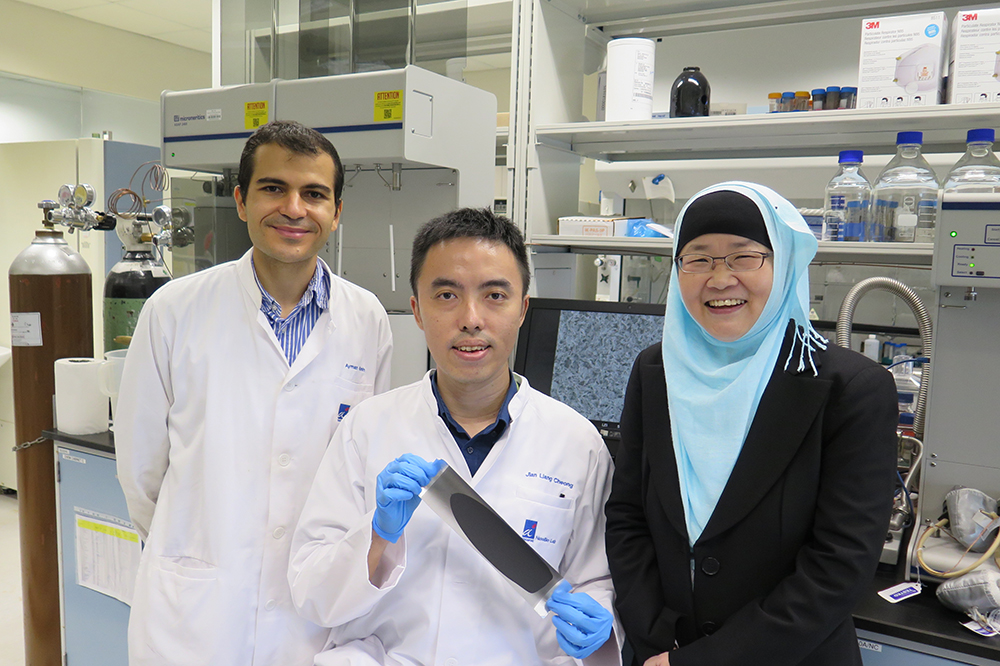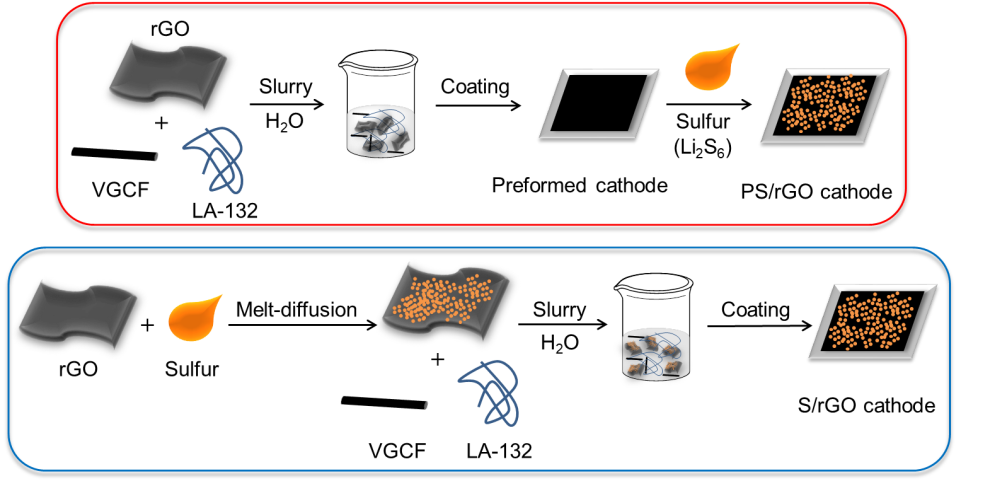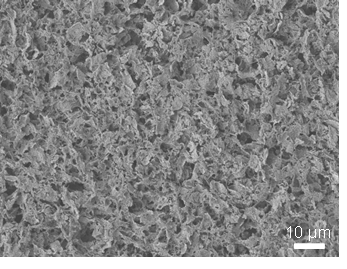A*STAR NEWS
Singapore Scientists Simplify Lithium-Sulfur Battery Production to Meet Future Energy Storage Needs
Singapore, October 10, 2019
Singapore scientists from NanoBio Lab (NBL) of A*STAR have developed a novel approach to prepare next-generation lithium-sulfur cathodes, which simplifies the typically time-consuming and complicated process for producing them. This represents a promising step towards the commercialization of lithium-sulfur batteries, and addresses industry's need for a practical approach towards scaling up the production of new materials that improve battery performance.
While the lithium-ion battery is widely recognized as an advanced technology that can efficiently power modern communication devices, it has drawbacks such as limited storage capacity and safety issues due to its inherent electrochemical instability. This is set to change with a new simplified technique developed by NBL's team of researchers, in the development of lithium-sulfur cathodes from inexpensive commercially available materials. Sulfur's high theoretical energy density, low cost and abundance contribute to the popularity of lithium-sulfur battery systems as a potential replacement for lithium-ion batteries.
Theoretically, lithium-sulfur batteries are capable of storing up to 10 times more energy than lithium-ion ones, but to date are unable to sustain this over repeated charging and discharging of the battery. NBL's lithium-sulfur cathode demonstrated excellent specific capacity of up to 1,220 mAh/g, which means that 1 gram of this material could store a charge of 1,220 mAh. In contrast, a typical lithium-ion cathode has a specific energy capacity of 140 mAh/g. In addition, NBL's cathode could maintain its high capacity over 200 charging cycles with minimal loss in performance. Key to this was NBL's unique two-step approach of preparing the cathode.
By first building the carbon host before adding the sulfur source, the researchers obtained a 3D interconnected porous nanomaterial. This approach prevents NBL's carbon scaffold from collapsing when the battery is charged, unlike those of conventionally prepared cathodes. The latter collapses during the initial charge and discharge cycle, resulting in a structural change. As such, the conventional cathodes become highly dense and compact with a lower surface area and smaller pores, resulting in lower battery performance than NBL's carbon scaffold. In fact, NBL's cathode offered 48% higher specific capacity and 26% less capacity fade than conventionally prepared sulfur cathodes. When more sulfur was added to the material, NBL's cathode achieved a high practical areal capacity of 4 mAh per cm2.
"We have shown that the preparation technique of sulfur cathodes has a strong influence on the electrochemical performance in lithium-sulfur batteries," said Professor Jackie Y. Ying, who leads the NBL research team. "Our method is industrially scalable and we anticipate that it would have a significant impact on the future design of practical lithium-sulfur batteries."
The NBL researchers are working on designing and optimizing not just the cathode, but also the anode, separator and electrolyte through nanomaterials engineering. The goal is to develop a full cell system for lithium-sulfur battery that has superior energy storage capacity, as compared to conventional lithium-ion batteries. Such a new battery system can last much longer than current batteries, and would be of great interest for electronic devices, electric vehicles and grid energy storage.
Reference: J. L. Cheong, A. A. AbdelHamid and J. Y. Ying, "A High-Performance Slurry-Coated Polysulfide Cathode for Lithium-Sulfur Battery," Nano Energy, 66 (2019) 104114.

The NBL research team (from right to left): Prof. Jackie Y. Ying, Mr. Jian Liang Cheong and Dr. Ayman AbdelHamid.

Illustration of NBL’s method of preparing sulfur cathode (top) and how it is conventionally prepared (bottom).

Microscopic image of the cathode nanostructure.
About NanoBio Lab (www.nbl.a-star.edu.sg)
NanoBio Lab is a multidisciplinary lab-incubator that is committed to improving lives through scientific discovery and technological innovation. Using nanotechnology, we create new materials and systems with unique functions and enhanced properties for advanced applications. We work closely with hospitals and industry to shape the future of medicine, food safety, environmental monitoring and energy. Our research focus includes high-precision drug delivery vehicles, biocompatible materials for cell culture and medical use, portable detection kits for infectious diseases and food pathogens, intelligent sensors for environmental pollutants and food fraud, organs-on-chip for toxicology testing, advanced water purification membranes and innovative energy storage solutions. Our vision is to improve the world through nanotechnology. Under the direction of renowned nanotechnology researcher, Professor Jackie Y. Ying, the NanoBio Lab works at the intersection of chemistry, materials science, engineering, and medicine to develop new nanocomposites, biomaterials, synthetic molecules, devices and biosystems to tackle major global challenges. As a nationally funded Laboratory, we contribute toward the growth of Singapore’s economy by nurturing research talents, creating portfolios of intellectual properties, and commercializing new technologies.
About the Agency for Science, Technology and Research (www.a-star.edu.sg)
The Agency for Science, Technology and Research (A*STAR) is Singapore's lead public sector agency that spearheads economic oriented research to advance scientific discovery and develop innovative technology. Through open innovation, we collaborate with our partners in both the public and private sectors to benefit society.
As a Science and Technology Organisation, A*STAR bridges the gap between academia and industry. Our research creates economic growth and jobs for Singapore, and enhances lives by contributing to societal benefits such as improving outcomes in healthcare, urban living, and sustainability.
We play a key role in nurturing and developing a diversity of talent and leaders in our Agency and research entities, the wider research community and industry. A*STAR’s R&D activities span biomedical sciences and physical sciences and engineering, with research entities primarily located in Biopolis and Fusionopolis. For ongoing news, visit www.a-star.edu.sg.
Was This Article Helpful ?
A*STAR celebrates International Women's Day

From groundbreaking discoveries to cutting-edge research, our researchers are empowering the next generation of female science, technology, engineering and mathematics (STEM) leaders.
Get inspired by our #WomeninSTEM
